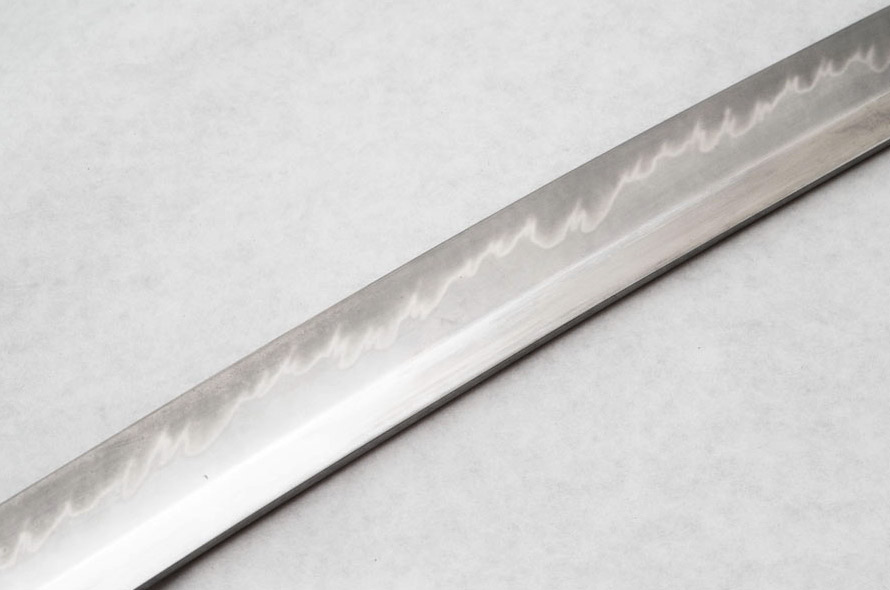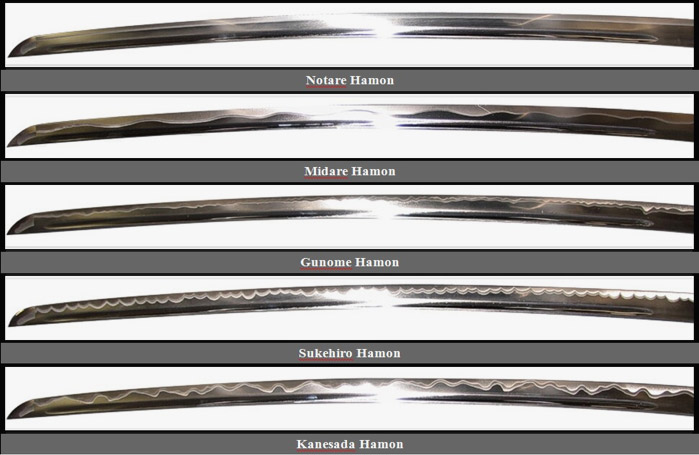- Katana 1€ to 79€
- Katana ONE PIECE
- Katana 80€ to 199€
- Katana 200€ to 599€
- Katana over 600 €
- Katana Custom
- Iaito - 模擬刀
- Wakizashi
- Tanto
- [+] Parts katana
- [+] Katana Accessory
- Engraving katana
- [+] Ninja
- [+] Chinese weapon
- [+] Wooden weapons
- [+] Knife
- [+] Outfits
- [+] House and Objects
- Médiéval Sword
- Military saber
- Home
- Profile
- Services
- Help
- Log in
- **Cart**
- What a difference in a katana and an Iaito
- The different types of steel
- How to choose your katana
- Accessories and maintenance of Iaito and katana
- Little katana dictionary
- What disciplines to practice with a katana or an iaito
- Musashi Miyamoto the greatest samurai Japan has ever known
- The laikidoka sword: the bokken
- Kendo, the legacy of the samurai
- The making of a katana
- The Habaki of the katana
- The Kanjis
- Budo
- The Saya of the katana
- Kyudo
- The Yumi
- The Hamon of the katana
- The Tsuba of the Katana
- How to measure a katana or an iaito
- The Sageo of the katana
- The history of the Japanese sword - 1
- The history of the Japanese sword - 2
- Custom katanas and iaitos
- Chanoyu, the Japanese tea ceremony
- The Iaido
- The boshin war or the last samurai
- The best incense from Japan
- Renovation of Japanese swords
- Ninja
- FAQ
- Terms and conditions
- Site map
- Contact
- Useful links
- Private life
- Clubs & Communities
The Hamon of Katana
The hamon looks like a milky-colored trail that follows the edge of the blade. It is the result of heat treatment (quenching) intended to harden the sharp part of the katana.
The HAMON draws a more or less regular line and each of the paths has a name and can sometimes be typical of a school or even a blacksmith.
The most frequent HAMON is straight but many forms exist.
The HAMON draws a more or less regular line and each of the paths has a name and can sometimes be typical of a school or even a blacksmith.
The most frequent HAMON is straight but many forms exist.

Quenching
An essential step which will make the difference between a good saber and a lesser quality saber.
This step consists in immersing a metal brought to high temperature in a cold bath in order to keep at room temperature a modification of the molecular structure obtained when hot and thus increase the hardness of the steel.
For this, Japanese blacksmiths developed the concept of partial quenching, a technique that Westerners, with a few exceptions, will not master until very late and never so well. The concept is simple: by covering part of the blade with a mixture of refractory clay, charcoal powder, silica and other elements kept secret by each blacksmith, we end up isolating the back from the cold. and the sides of the blade (ie the parts of the blade whose flexibility we want to keep).
Thus, when the blade is soaked in water, only the edge will be cooled quickly enough to form a hard steel, which will give the edge of the weapon extreme hardness while maintaining high impact resistance for the whole. .
This selective quenching also forms the quenching line (hamon), the shapes of which are characteristic of schools and blacksmiths: the less protected part cools quickly (which makes it harder) while the more protected part cools more slowly ( which allows it to retain its flexibility). The point of contact between the two parts then undergoes a thermal shock which will allow the austenite to take on its shiny solid structure called martensite.
An essential step which will make the difference between a good saber and a lesser quality saber.
This step consists in immersing a metal brought to high temperature in a cold bath in order to keep at room temperature a modification of the molecular structure obtained when hot and thus increase the hardness of the steel.
For this, Japanese blacksmiths developed the concept of partial quenching, a technique that Westerners, with a few exceptions, will not master until very late and never so well. The concept is simple: by covering part of the blade with a mixture of refractory clay, charcoal powder, silica and other elements kept secret by each blacksmith, we end up isolating the back from the cold. and the sides of the blade (ie the parts of the blade whose flexibility we want to keep).
Thus, when the blade is soaked in water, only the edge will be cooled quickly enough to form a hard steel, which will give the edge of the weapon extreme hardness while maintaining high impact resistance for the whole. .
This selective quenching also forms the quenching line (hamon), the shapes of which are characteristic of schools and blacksmiths: the less protected part cools quickly (which makes it harder) while the more protected part cools more slowly ( which allows it to retain its flexibility). The point of contact between the two parts then undergoes a thermal shock which will allow the austenite to take on its shiny solid structure called martensite.

The different types of hamon
The HAMON draws a more or less regular line and each of these lines has a name and can sometimes be typical of a school or even of a blacksmith.
Here are some examples of hamon from Gassan school
The HAMON draws a more or less regular line and each of these lines has a name and can sometimes be typical of a school or even of a blacksmith.
Here are some examples of hamon from Gassan school

Real and false hamon
The quenching line, as its name suggests, results from the quenching process (differentiated heat treatment) which hardens the steel after heating and sudden cooling in water or oil.
A blade can be tempered but without showing the design of the quench line since it is the polishing of the blade that reveals the quench line.
On very low-end katanas (unhardened blades), the blade is passed over a grinding wheel which will draw a false temper line.
On other non-soaked katanas, the use of acid makes it possible to draw a false hamon.
On mid-range models (hardened undifferentiated blades), acid is also used to reveal a quench line.
On high-end models (differentiated tempered blades with clay), manual polishing will reveal the quenching line.
The quenching line, as its name suggests, results from the quenching process (differentiated heat treatment) which hardens the steel after heating and sudden cooling in water or oil.
A blade can be tempered but without showing the design of the quench line since it is the polishing of the blade that reveals the quench line.
On very low-end katanas (unhardened blades), the blade is passed over a grinding wheel which will draw a false temper line.
On other non-soaked katanas, the use of acid makes it possible to draw a false hamon.
On mid-range models (hardened undifferentiated blades), acid is also used to reveal a quench line.
On high-end models (differentiated tempered blades with clay), manual polishing will reveal the quenching line.


Hamon brushed steel
Hamon drawn with acid


Hamon revealed in acid
Genuine hamon revealed on polishing
Sources :
http://forgesdujabron.free.fr
http://www.aikido-doua.fr/
http://forgesdujabron.free.fr
http://www.aikido-doua.fr/
|
No comments
|




